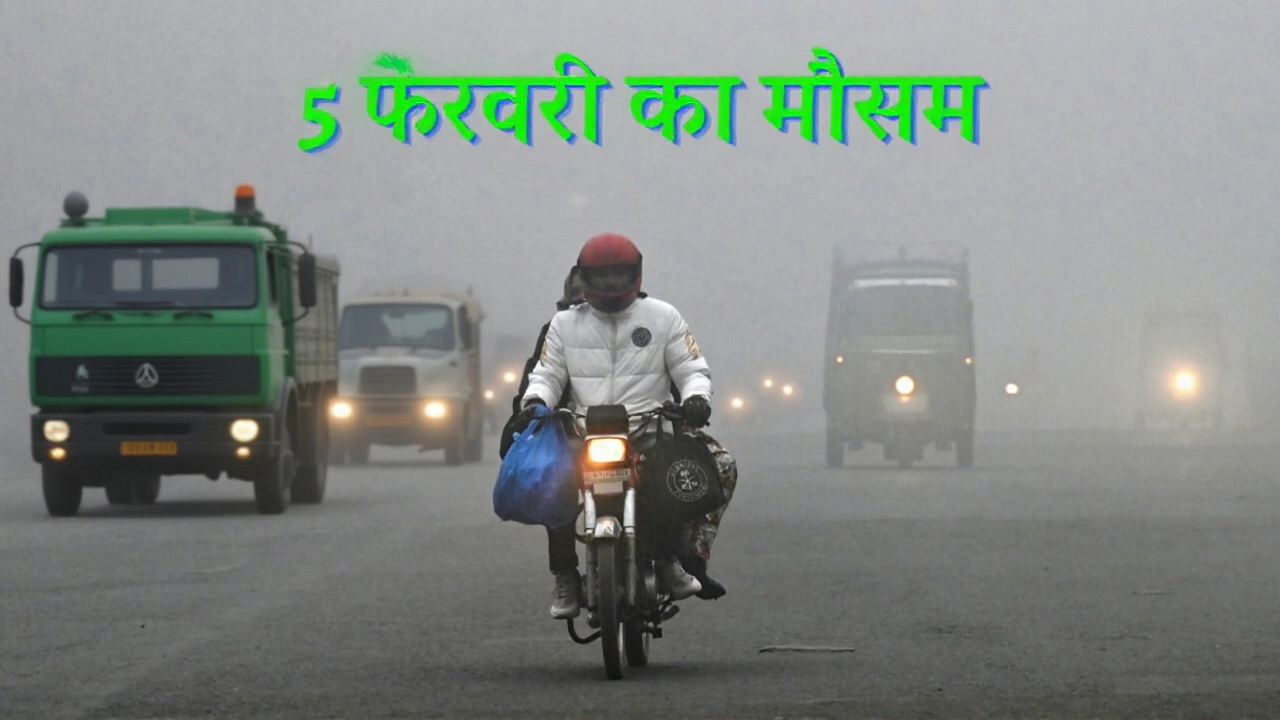India’s northern belt woke up to a meteorological roller‑coaster on Sunday, March 9, 2025 – sunshine splashed one moment, and a nip of snow cracked the next. Indian Meteorological Department (IMD) rolled out a fresh set of alerts, warning of scorching highs in the plains and sudden showers – even snowfall – in the hills.
Here’s the thing: the capital region of Delhi-NCR, which just shrugged off a pink‑tinged chill, is now slated to hit 31‑35 °C by March 13, with lows hovering around 13‑19 °C. A breezy, partly cloudy sky will linger, but the heat will feel like an early taste of summer. Meanwhile, the Himalayan foothills, from Shimla to Dehradun, are set to welcome the first snowflakes of the season, courtesy of a lingering Western Disturbance that arrived on Sunday.
What’s changing across the north?
From the plains of Uttar Pradesh to the high passes of Uttarakhand, weather patterns are splitting into two camps. In the low‑lying districts – think Kanpur and Lucknow – the sun will dominate. Skymet’s own analyst, Rohit Sharma, noted that “temperatures could breach 35 °C by the weekend, making midday outings uncomfortable without shade.”
On the flip side, the same disturbance that pushes warm air northward is also dragging moisture‑laden clouds into the Himalayas. Shimla is forecast to see intermittent rain from March 9‑14, with a thunderstorm on the 10th that could bring hail. In Rudraprayag and Nainital, snow accumulations of up to 5 cm are possible – a welcome sight for trekkers, but a caution for motorists.
How the IMD forecast unfolded
The IMD’s bulletins on March 8 flagged a cyclonic circulation forming over western Rajasthan. By morning, satellite imagery confirmed the system’s eastward drift, setting the stage for a classic Western Disturbance. Dr. Ramesh Kumar, senior meteorologist at Indian Meteorological Department, told reporters, “We are seeing a sharp temperature gradient between the cold upper air over the Himalayas and the warmer sub‑tropical layer. That contrast fuels the precipitation bands we’re expecting in Uttarakhand and Himachal.”
He added that the same system will push a southerly wind into the Gangetic plain, nudging temperatures upward. “It’s a double‑edged sword,” Dr. Kumar said, “the plains stay hot, while the hills get wet and cold.”

Regional snapshots: From the south‑east to the islands
While the north wrestles with heat‑rain contradictions, the IMD’s model also hints at scattered showers across the far‑east. Arunachal Pradesh and Sikkim may see light to moderate rain, especially in valleys like Tawang. Further down, Assam could get a drizzle, though the main rain‑belt will stay northwest of the Brahmaputra.
Even the tropical archipelago of Andaman and Nicobar Islands isn’t immune. A weak low‑pressure cell moving westward may bring brief showers to Port Blair on March 11‑12. That’s a far cry from the monsoon, but locals are already pulling out umbrellas.
Down south, the rain‑laden wind isn’t expected to reach Kerala in any significant amount. The state will remain largely dry, with temperatures staying in the high 20s – a small consolation for the rest of the country.
Impact on daily life and upcoming festivals
With Holi slated for March 25, the mixed forecasts have event organizers on edge. In Delhi, authorities are preparing contingency plans: water‑balloon stalls may shift to shaded avenues, while in Uttarakhand, trekking agencies are advising hikers to carry extra layers and check road conditions before heading to Badrinath.
Farmers in the Indo‑Gangetic plains could see a short‑lived reprieve. The lingering heat threatens wheat germination, but a light shower on March 9‑10 may provide enough moisture to keep the seedlings alive. The Ministry of Agriculture has already issued an advisory urging irrigation‑dependent farms to conserve water.
What’s next? Tracking the disturbance
Forecasters will keep a close eye on the Western Disturbance as it migrates eastward. By March 14, models suggest it could weaken over the Tibetan plateau, reducing the rain‑risk for central India. However, a secondary disturbance may develop over the Arabian Sea, potentially bringing another wave of showers to the western coast in the second week of March.
For the average commuter, the takeaway is simple: expect a swing between heat and rain, carry a light jacket and an umbrella, and stay updated via IMD alerts or local news bulletins.
- Key Facts
- Delhi-NCR: 31‑35 °C (max), 13‑19 °C (min) from March 9‑13.
- Shimla & Uttarakhand: intermittent rain, possible snow up to 5 cm.
- Western Disturbance active from March 9, influencing northern India.
- Rain alerts issued for Delhi, J&K, Himachal, Uttarakhand, UP, Punjab, Haryana.
- Scattered showers expected in Arunachal Pradesh, Sikkim, Assam, Andaman & Nicobar.
Frequently Asked Questions
How will the heat affect commuters in Delhi?
Temperatures topping 35 °C mean crowded buses and metro trains may feel stifling. The Delhi Transport Corporation has increased the frequency of air‑conditioned buses between 10 am and 4 pm, and the municipal corporation advises staying hydrated and avoiding outdoor activities during peak heat hours.
What safety measures are advised for hikers in the Himalayas?
Hikers should pack insulated jackets, waterproof boots, and check road closures on the National Highways Authority of India website. Local guides recommend beginning treks early in the day to avoid afternoon rain showers that could make trails slippery.
Will the upcoming Holi celebrations be affected?
Organisers in Delhi and Punjab are preparing contingency plans. In areas where rain alerts are active, events may shift to indoor venues or be postponed by a day. In the hills, Holi festivities are likely to be low‑key, with locals opting for indoor gatherings.
Why does a Western Disturbance cause both heat and rain?
A Western Disturbance is a fast‑moving low‑pressure system that brings cold air from the Mediterranean region. When it meets the warm, moist air over the Indian subcontinent, it creates a sharp temperature gradient. The gradient lifts warm air upward, resulting in rain or snow in the hills, while the hot air spilling into the plains raises temperatures.
What should farmers in the plains do to protect their crops?
The Ministry of Agriculture advises farmers to practice mulching to retain soil moisture and to schedule irrigation during the early morning hours to avoid evaporation losses. The brief showers on March 9‑10 could offer a short respite, but sustained heat means water‑conserving techniques remain essential.
